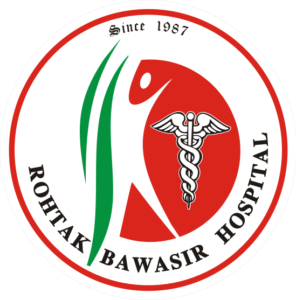Piles Treatment in India: A Comprehensive Guide to the Best Options


Updated on: 4th Jun 2024
India has become a global hub for advanced and effective piles treatment. With cutting-edge technologies, skilled medical professionals, and cost-effective healthcare, patients have access to a wide range of treatment options. This blog explores some of the best resources and methods available for piles treatment in India, supported by insights from highly ranked blogs and reputable sources.
Understanding Piles

Piles, also known as hemorrhoids, are swollen veins in the anal or rectal region. They can cause pain, itching, bleeding, and discomfort, varying in severity. Treatments range from lifestyle changes and medications to advanced surgical procedures.
Top Blogs on Piles Treatment in India

The Treatment Journey at Rohtak Bawasir Hospital
Here’s a curated list of insightful blogs on piles treatment that have been recognized for their in-depth content and practical advice:
-
“Why Choose Laser Treatment for Piles?”
This blog highlights the growing popularity of laser treatment in India. It emphasizes its benefits, such as minimal invasiveness, faster recovery, and reduced pain -
“Affordable and Reliable Piles Treatment in India”
Focused on the cost-effectiveness of Indian healthcare, this article discusses how India offers quality piles treatment at a fraction of the cost compared to other countries -
“Comprehensive Guide to Piles: Symptoms, Causes, and Treatments”
Covering everything from prevention to advanced treatments, this blog is perfect for individuals seeking holistic knowledge about piles
Key Treatment Options in India

India offers a blend of traditional and modern treatments for piles. Here’s an overview:
1. Laser Surgery
Laser treatment is gaining prominence due to its precision and minimal recovery time. It is often preferred for severe cases and offers benefits such as:
- Minimal pain and blood loss
- Outpatient procedure
- Quick recovery
2. Stapler Hemorrhoidectomy
Known as a minimally invasive procedure, stapler surgery is ideal for treating prolapsed piles. It ensures less post-operative pain and faster healing
3. Ayurveda and Natural Remedies
India’s Ayurvedic heritage provides natural remedies, including herbal medications and dietary changes, to manage mild piles effectively. Ayurvedic treatments aim to address the root cause rather than just symptoms
4. Conventional Surgery
For advanced cases, conventional surgery is a reliable option. It’s particularly effective for large or external hemorrhoids.
Factors to Consider When Choosing a Treatment

- Severity of the Condition: Early-stage piles may be treated with medications and lifestyle changes, while advanced cases might require surgery.
- Cost: India offers affordable treatment options, with laser surgeries costing between ₹35,000 to ₹1.5 lakh, depending on the hospital and location
- Location of Treatment: Cities like Delhi, Hyderabad, and Chennai are home to reputed hospitals and experienced surgeons.
Conclusion
India offers some of the best resources for piles treatment, making it a preferred destination for both local and international patients. Whether you’re considering advanced surgical options like laser treatment or exploring traditional remedies, there’s a solution tailored to every need. Explore these blogs and consult trusted healthcare providers to make informed decisions.
Meet Our Specialists

Dr. Raj Kumar Garg (B.A.M.S.)
40+ Years of Experience

Dr. Rahul Garg (B.A.M.S.)
15+ Years of Experience














































